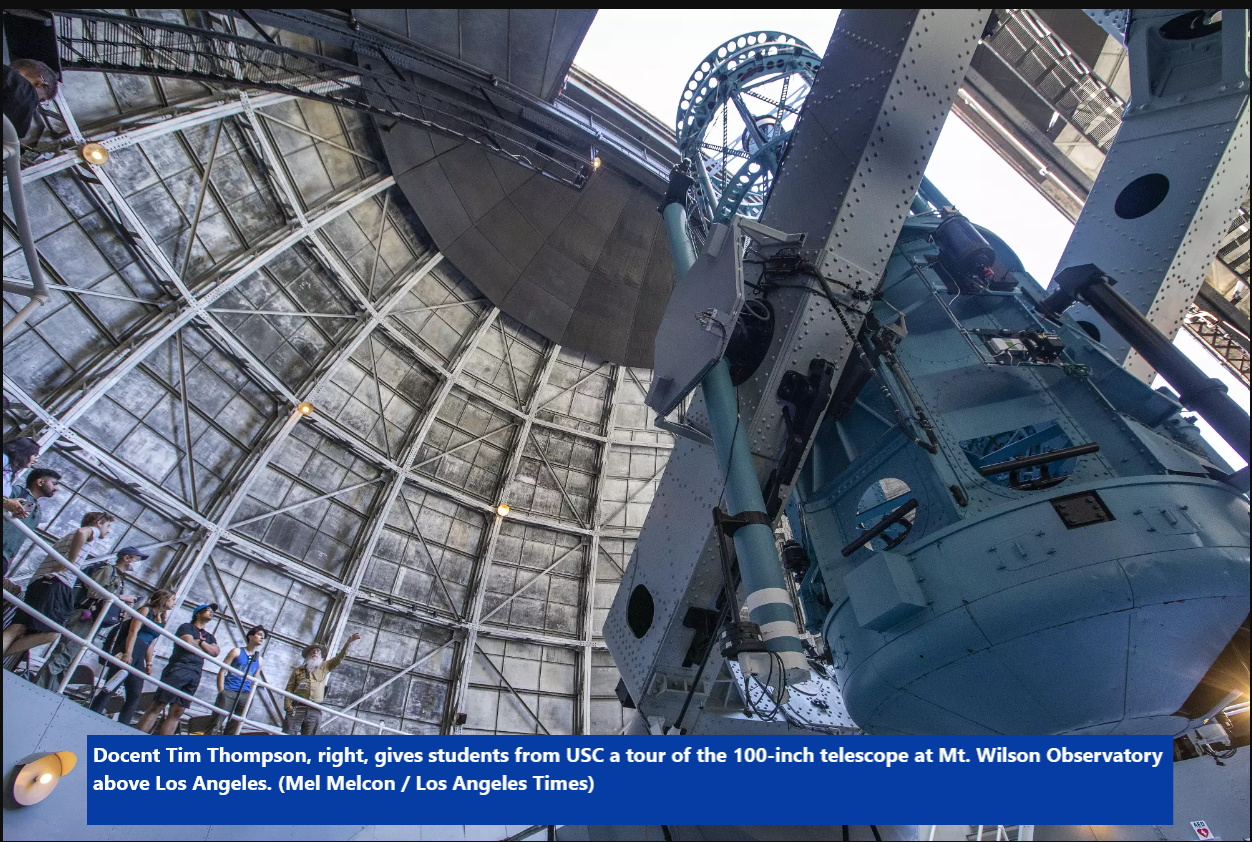
High atop the San Gabriel Mountains in Southern California, Mount Wilson Observatory has stood as a bastion of astronomical discovery and understanding for over a century. This historic observatory has played a pivotal role in shaping our comprehension of the cosmos. However, in recent years, this scientific icon has faced various challenges, both financial and environmental. In this blog, we'll delve into the significance of Mount Wilson Observatory, the threats it has encountered, and the broader implications of preserving our special dive locations, including our oceans and reefs.
The Legacy of Mount Wilson Observatory
Mount Wilson Observatory holds a unique place in the history of astronomy. It has been a site of groundbreaking discoveries and technological advancements that have expanded our understanding of the universe. Let's take a closer look at some of its most notable contributions:
-
The Expanding Universe: In the early 20th century, astronomer Edwin Hubble used the observatory's 100-inch Hooker telescope to provide evidence for the expanding universe. His observations led to the formulation of Hubble's Law, one of the foundational principles of modern cosmology.
-
Solar Observations: The observatory's solar telescopes have been instrumental in studying our nearest star. Significant insights into the nature of the Sun and solar phenomena have been made from this location.
-
Stellar Research: Mount Wilson's astronomers have also made crucial contributions to the understanding of stars, including the classification of stars based on their spectral types.
-
Adaptive Optics: The development of adaptive optics technology, which corrects for the blurring of images caused by Earth's atmosphere, was another breakthrough achieved at Mount Wilson.
The Challenges Faced by Mount Wilson Observatory
Despite its historical significance, Mount Wilson Observatory has faced several challenges that threaten its continued operation and preservation. One of the most pressing issues is financial instability. Maintaining such a facility requires substantial funding for equipment, maintenance, and staffing. The 2018 Woolsey Fire also caused significant damage to the area, making it difficult to continue operations.
In 2023, the Los Angeles Times reported that the observatory was in dire need of funds to repair infrastructure and continue its vital research. This raised concerns about the potential loss of a scientific gem that has contributed immensely to our understanding of the universe.
Preserving Special Dive Locations: Oceans and Reefs
While we focus on the importance of preserving Mount Wilson Observatory, it's also essential to recognize the broader context of conservation efforts. The observatory's struggles parallel the challenges faced by our oceans and kelp and coral reefs, which serve as vital ecosystems and sources of scientific knowledge.
-
Biodiversity: Just as Mount Wilson Observatory hosts a diverse range of astronomical phenomena, our oceans and reefs support a vast array of marine life. Preserving these ecosystems is crucial for biodiversity and ecological balance.
-
Climate Change Mitigation: Oceans play a significant role in regulating the Earth's climate. They absorb carbon dioxide and help mitigate climate change. However, the health of our oceans and reefs is deteriorating due to factors like rising sea temperatures and ocean acidification.
-
Scientific Exploration: Just as astronomers rely on observatories to expand our knowledge of the universe, marine biologists and oceanographers depend on healthy ecosystems to study marine life and understand the impacts of climate change.
-
Economic and Recreational Value: Oceans and reefs are not only scientifically valuable but also economically significant. They support industries such as fisheries and tourism, providing livelihoods and recreation for many.
Investing in Preservation
The challenges faced by Mount Wilson Observatory, our oceans, and kelp/coral reefs highlight the importance of investing in preservation efforts. Here are some key strategies:
-
Public Awareness: Raising public awareness about the significance of these locations and the threats they face is essential. Advocacy can lead to increased public and private support.
-
Collaborative Initiatives: Governments, environmental organizations, and scientific institutions should collaborate to pool resources, knowledge, and expertise for effective conservation.
-
Sustainable Practices: Implementing sustainable fishing and tourism practices can help reduce the impact on oceans and reefs, ensuring their long-term viability.
-
Climate Action: Addressing climate change through reduced greenhouse gas emissions is critical for mitigating the impacts on these locations.
-
Philanthropic Support: Private philanthropy can play a significant role in preserving unique locations like Mount Wilson Observatory and protecting our oceans and reefs.
Conclusion
Mount Wilson Observatory's struggle for preservation mirrors the challenges faced by other special dive locations, including our oceans and coral reefs. These unique sites are invaluable for scientific discovery, environmental health, and our understanding of the world around us. The battle to save Mount Wilson Observatory underscores the importance of investing in the preservation of these vital places, as they hold the key to expanding human knowledge and ensuring the well-being of our planet. By recognizing the shared goal of preserving our natural and scientific wonders, we can work together to ensure a brighter future for all.



Share:
Dive In, Dive Smart, Keep Learning: The Wisdom of Brian Herbert
Oceanic Enigmas Unveiled: Delving into Deep Questions and Profound Answers on Quora